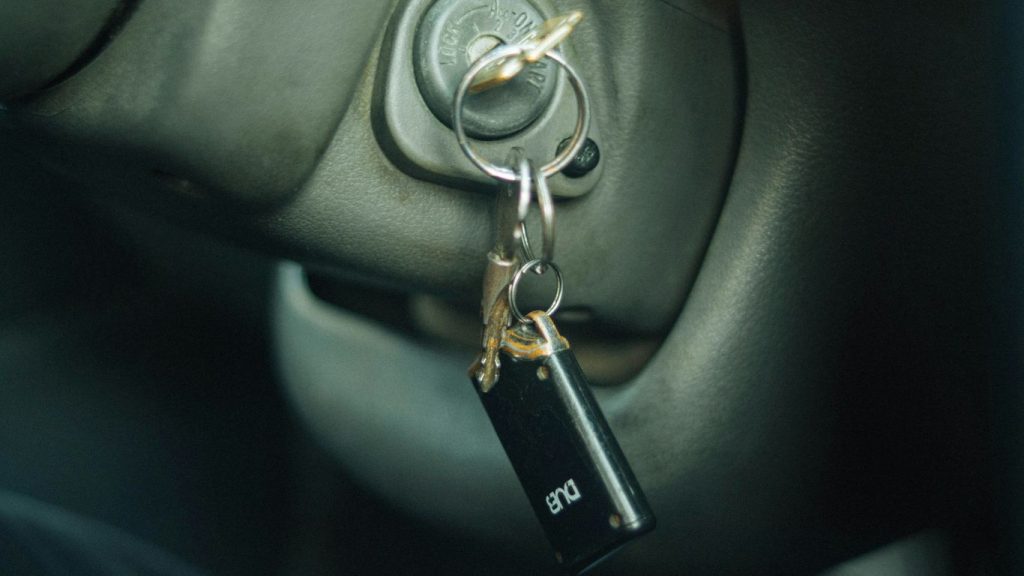Getting your first car is a huge milestone, and figuring out the insurance part can feel like a whole other challenge. It’s not always straightforward, and for new drivers, it can seem especially confusing. We’re going to break down what you need to know about new drivers car insurance for 2025, so you can get on the road with confidence and without any nasty surprises.
Key Takeaways
- Understand the factors that affect your new drivers car insurance rates, like your age, vehicle choice, and driving habits.
- Explore different insurance options, including usage-based insurance, to find coverage that fits your needs and budget.
- Shop around and compare quotes from several insurance companies to get the best deal on your new drivers car insurance.
- Consider adding a no-claim discount protector and adjusting your policy excess to lower your premiums.
- Always review your policy regularly and avoid auto-renewals to make sure you have the most suitable and affordable new drivers car insurance.
Understanding New Drivers Car Insurance Premiums

Getting your first car is exciting, but the insurance costs for new drivers can feel like a shock. Insurers look at a lot of things to figure out how much to charge, and for new drivers, this often means higher premiums. It’s all about risk assessment. They use data to predict who is more likely to have an accident or make a claim. Unfortunately, statistics show that newer drivers, especially younger ones, tend to be involved in more accidents. This is why you might see higher rates compared to someone who’s been driving for years with a clean record.
Factors Influencing New Driver Rates
Several key factors go into calculating a new driver’s insurance premium. It’s not just about your age; it’s a mix of personal details, driving habits, and the car itself. Insurers consider:
- Age and Driving Experience: Younger drivers and those with less than a year or two of driving experience typically face the highest rates. This is a major factor because statistically, this group has a higher accident rate.
- Driving Record: Even if you’re a new driver, any past traffic violations or accidents (even if you weren’t the primary driver) can affect your premium. A clean record, even a short one, is always better.
- Location: Where you live and park your car matters. Areas with higher rates of theft or accidents often lead to higher insurance costs.
- Vehicle Type: The car you drive plays a big role. More on this in the next section.
- Usage: How much you drive and where you drive (e.g., city vs. rural, commuting vs. pleasure) can also influence the price.
It’s important to remember that insurance companies are in the business of managing risk. While it might seem unfair, the premiums are based on broad statistical trends, not necessarily your individual driving ability just yet.
The Impact of Vehicle Choice
Choosing the right car can significantly impact your insurance premium. Insurers look at several aspects of the vehicle:
- Make and Model: Sports cars or vehicles with high repair costs are generally more expensive to insure than standard sedans or hatchbacks.
- Safety Features: Cars with advanced safety features, like anti-lock brakes, airbags, and electronic stability control, can sometimes lead to lower premiums because they can help prevent accidents or reduce their severity.
- Theft Rates: Vehicles that are frequently stolen will likely have higher insurance costs.
- Engine Size and Power: Cars with larger, more powerful engines can be more expensive to insure, as they are often associated with faster driving and a higher risk of accidents.
For example, insuring a brand-new, high-performance SUV will almost certainly cost more than insuring an older, smaller economy car. It’s worth checking insurance costs for a specific vehicle before you buy it.
Understanding Usage-Based Insurance Options
Usage-Based Insurance (UBI), often called telematics or pay-as-you-drive insurance, is becoming more popular. This type of insurance uses technology to track your driving habits. The core idea is that if you drive safely and less often, you could pay less for insurance.
Here’s how it generally works:
- Data Collection: A small device is installed in your car, or you use a mobile app, to record data like mileage, speed, braking habits, and time of day you drive.
- Risk Assessment: The insurer analyzes this data to assess your personal driving risk.
- Premium Adjustment: Your premium is then adjusted based on your driving behavior. Safe drivers often receive discounts, while riskier driving habits might lead to higher costs.
UBI can be a great option for new drivers who are confident in their safe driving practices and don’t drive a lot. It offers a more personalized approach to insurance pricing, moving away from broad statistical averages. Some insurers in North Carolina, for instance, are expanding surcharges for inexperienced operators, making UBI an attractive alternative for new drivers [3799].
Strategies for Affordable New Drivers Car Insurance
Finding car insurance that doesn’t break the bank is a common goal, especially for new drivers. It might seem like a challenge, but there are smart ways to approach it. Comparing quotes from different companies is one of the most effective steps you can take. Don’t just go with the first quote you get; take the time to shop around. Different insurers have different pricing structures and discounts, so you might find a much better deal elsewhere.
Comparing Quotes from Multiple Insurers
When you’re looking for car insurance, it’s easy to feel overwhelmed by all the options. However, a little comparison shopping can go a long way in saving you money. Think of it like buying anything else – you wouldn’t buy the first item you see without checking other stores, right? The same applies to insurance. Each company looks at risk differently, which means their prices can vary quite a bit.
Here’s a simple way to approach it:
- List your needs: Know what kind of coverage you want. Do you need full comprehensive coverage, or will third-party liability suffice for now?
- Gather information: Have your driver’s license, vehicle details, and driving history ready.
- Get quotes: Contact at least three to five different insurance providers. You can do this online, over the phone, or through an insurance agent.
- Compare apples to apples: Make sure you’re comparing policies with similar coverage levels and deductibles.
It’s also a good idea to look into independent agents or brokers who can get quotes from multiple companies for you. They often have access to deals you might not find on your own. Remember, the goal is to find a policy that offers good protection at a price that fits your budget.
The Role of a No-Claim Discount Protector
A No-Claim Discount (NCD) Protector is an add-on to your car insurance policy. If you have a period of claim-free driving, you typically earn a discount on your premium. An NCD Protector helps safeguard that discount even if you have to make a claim. For new drivers, this might seem less relevant initially, but as you build a clean driving record, protecting your NCD becomes more important. It’s a way to reward safe driving and keep your premiums lower over time. Think of it as an investment in future savings.
Exploring Policy Excess Options
The ‘excess’ on your car insurance is the amount you agree to pay out-of-pocket before the insurance company covers the rest of a claim. You can often choose a higher excess to lower your annual premium. For example, if you opt for a higher excess, your upfront cost in the event of a claim will be greater, but your regular payments will be less. It’s a trade-off that can help manage costs, but it’s important to make sure you can afford the higher excess if you ever need to make a claim. Consider what you can comfortably pay if the unexpected happens. You can explore cheaper car insurance options by adjusting this.
Choosing the right balance between your premium and your excess is key to affordable coverage. A lower premium with a very high excess might seem attractive, but it could lead to financial strain if you have to pay a large sum after an accident.
Maximizing Coverage for New Drivers
Getting the right car insurance is a big step for any new driver. It’s not just about meeting legal requirements; it’s about making sure you’re protected without paying too much. Think of it like building a safety net – you want it strong enough to catch you, but not so big it’s a hassle to carry.
Choosing the Right Coverage Level
When you’re starting out, it’s easy to get overwhelmed by all the options. You’ll see terms like liability, collision, and comprehensive. Basically, liability covers damage you cause to others, collision covers damage to your car in an accident, and comprehensive covers things like theft or weather damage. For a new driver, it’s often a good idea to start with a solid foundation. Many new drivers in Texas, for example, find good options from companies like Liberty Mutual or State Farm new drivers in Texas.
It’s important to match your coverage to your car’s value and your own financial situation. If you’re driving an older car that’s not worth much, paying for full comprehensive and collision coverage might not make sense. On the other hand, if you have a newer or more valuable car, that coverage becomes much more important.
Understanding Third-Party vs. Comprehensive Policies
This is where you really decide how much protection you want. A third-party policy is the most basic level. It covers damage or injuries you cause to other people or their property, but it doesn’t cover your own car. It’s usually the cheapest option. Then there’s comprehensive coverage, which is broader. It includes third-party liability but also covers damage to your own vehicle from things like accidents, theft, vandalism, or even falling objects. For new drivers, the decision often comes down to balancing cost with peace of mind. While third-party is cheaper, comprehensive offers much greater protection for your own vehicle.
Here’s a quick look at the main differences:
| Policy Type | Covers Damage to Others | Covers Your Car | Cost |
|---|---|---|---|
| Third-Party Only | Yes | No | Lower |
| Comprehensive | Yes | Yes | Higher |
Evaluating Additional Riders and Benefits
Beyond the main coverage types, there are extra features, often called riders or add-ons, that can be really useful. One common one is a No-Claim Discount (NCD) Protector. This helps you keep your NCD even if you have a minor claim. Another useful benefit, especially if you sometimes let friends or family borrow your car, is Unlisted Driver Protection Unlisted Driver Protection. This can provide coverage for drivers not specifically named on your policy. Think about your driving habits and potential needs when deciding if these extras are worth the additional cost. Sometimes, these small additions can make a big difference when you actually need them.
Navigating the Application Process

Applying for car insurance might seem a bit daunting, especially for new drivers. But with a little preparation, it can be a straightforward process. The key is to be organized and know what information you’ll need.
Gathering Necessary Documentation
Before you even start looking at policies, make sure you have all your important documents ready. This will speed things up considerably and prevent any last-minute scrambling. You’ll typically need:
- Driver’s License: Your valid driver’s license is the most important document. If you’re a new driver, this shows you’ve passed the required tests. Some insurers might ask for your driving history, so be prepared to provide that if available. For parents guiding teenagers, understanding the graduated licensing process is helpful [c48c].
- Vehicle Information: You’ll need the make, model, year, and Vehicle Identification Number (VIN) of the car you plan to insure. If you’re buying a new car, have the purchase agreement handy.
- Proof of Residency: This could be a utility bill or a lease agreement showing your current address.
- Driving History (if applicable): If you have any prior driving experience, even from another country, gather that information. For newcomers, using foreign driving history might help reduce rates [0730].
Working with Insurance Specialists
Don’t hesitate to reach out to insurance specialists or brokers. They can be a great resource, especially when you’re new to this. They understand the market and can help explain the different policy options available. They can also help you compare quotes from various providers, which is a smart move to find the best deal. Many services can help you answer a few questions and then recommend suitable plans, saving you a lot of time.
It’s important to ask questions. If something in a policy isn’t clear, or if you’re unsure about a specific coverage, a specialist can clarify it for you. This is also a good time to ask about any discounts you might be eligible for, such as those for completing a driver training program [7052].
The Importance of Accurate Information
When filling out your application, honesty and accuracy are paramount. Providing incorrect information, even unintentionally, can lead to issues down the road. This could mean your premium changes unexpectedly, or worse, your policy could be canceled. Insurers base your premium on a variety of factors, including your age, driving record, and the type of car you drive. Make sure all the details you provide are correct to avoid any problems.
Here’s a quick look at some common factors insurers consider:
| Factor | Impact on Premium |
|---|---|
| Age | Younger drivers often pay more. |
| Driving Experience | Less experience usually means higher rates. |
| Vehicle Type | Sports cars or high-risk vehicles cost more. |
| Location | Premiums can vary based on where you live. |
| Claims History | Past claims can increase your premium. |
Being upfront with all the details helps ensure your policy is accurate from the start.
Ongoing Management of New Drivers Car Insurance
Once you’ve got your new driver’s car insurance sorted, it’s not exactly a ‘set it and forget it’ kind of deal. Life changes, and so do your insurance needs. Plus, sticking with the same provider year after year might mean you’re missing out on better rates or coverage.
When to Review Your Policy
It’s a good idea to look over your policy at least once a year, or whenever a major life event happens. Think about these common triggers for a review:
- Major Life Changes: Did you get married or divorced? Have a child? Move to a new address? These events can all affect your insurance needs and potentially your premium.
- Vehicle Changes: Did you buy a new car, or did your primary driver’s circumstances change (e.g., they moved out)?
- Driving Record Updates: If your new driver has been accident-free for a while, their record might qualify them for better rates.
- Financial Adjustments: Have your income or budget changed? You might be able to adjust your coverage or excess to save money.
The Pitfalls of Auto-Renewal
Many people just let their car insurance auto-renew each year. It seems easy, but it can be a costly mistake. Insurers often don’t offer their best rates to existing customers. They might have new customer discounts that you’re not privy to. Always compare quotes from different companies before your policy renews. You might be surprised at how much you can save by simply shopping around. It’s worth taking a little time to compare quotes from multiple insurers to find the best deal for your situation.
Making Policy Adjustments Over Time
As your new driver gains more experience and their driving record stays clean, their insurance premiums should naturally decrease. It’s important to proactively check in with your insurer or shop around to see if these lower rates are being reflected in your policy. You might also consider adjusting your policy excess. A higher excess usually means a lower premium, but it also means you’ll pay more out-of-pocket if you need to make a claim. It’s a trade-off that might be worth considering as your driver matures and their risk profile changes. Remember, developing driving skills as a novice driver can lead to lower insurance premiums over time, so keep that in mind as your young driver continues to gain experience on the road. Developing driving skills can make a difference.
Regularly reviewing your car insurance policy is key to ensuring you have the right coverage at the best price. Don’t let inertia or the convenience of auto-renewal lead to overpaying or being underinsured.
Additional Considerations for Young Drivers
The Waiver for Young and Inexperienced Drivers
When you’re just starting out behind the wheel, insurance companies often see young drivers as a higher risk. This can lead to really high premiums. However, many policies offer a specific "waiver" or endorsement for young and inexperienced drivers. This basically means the insurance company acknowledges that you’re new to driving and adjusts the policy terms, sometimes with specific conditions, to account for this. It’s not always a discount, but it’s a way to make sure you have the correct coverage as you gain experience. Always ask your insurance agent about this option; it’s a standard part of many policies designed for new drivers.
Safe Driving Incentives and Discounts
Many insurers want to encourage safe driving habits, especially among younger drivers. They know that good driving can save everyone money in the long run. So, look out for programs that reward you for being a responsible driver. Some common incentives include:
- Good Student Discount: If you’re still in high school or college and maintain a good GPA (usually a B average or higher), you might qualify for a discount. It shows you’re disciplined, which often translates to safer driving.
- Defensive Driving Courses: Completing an approved defensive driving course can not only make you a better driver but also often earns you a discount on your premium. It’s a proactive step that insurers appreciate.
- Low Mileage Discounts: If you don’t drive a lot, perhaps only for short trips or on weekends, you might be eligible for a discount. This is especially relevant if you’re a student who only drives to campus or part-time work.
The Benefits of Telematics or Monitoring Devices
Telematics, often referred to as usage-based insurance (UBI) or monitoring devices, is becoming more popular. These devices, or even smartphone apps, track your driving behavior. They look at things like how fast you drive, how often you brake suddenly, and when you tend to drive (e.g., late at night). The idea is that safer drivers should pay less. If you’re a cautious driver who avoids risky behaviors, this can lead to significant savings on your insurance. It’s a way for insurers to get a more accurate picture of your actual driving habits rather than just relying on general statistics for young drivers. Some insurers might even offer cash rebates based on your driving data. It’s worth exploring if your insurance provider offers a telematics program and understanding exactly how your data will be used.
Driving for the first time can be exciting, but it’s important to be extra careful. Young drivers should always think about safety first. Want to learn more tips for new drivers? Visit our website for helpful advice!
Wrapping Up Your New Driver Insurance Journey
Getting car insurance for a new driver can feel like a lot, but it doesn’t have to be overwhelming. We’ve gone over why comparing quotes is a smart move and how your driving record, the car you choose, and even where you live can affect the price. Remember, insurance is there to give you peace of mind on the road. Take the time to look at different options, ask questions, and find a policy that fits your needs and your budget. It’s about making sure you’re covered without paying more than you have to. Happy driving in 2025!
Frequently Asked Questions
Why is car insurance for new drivers usually more expensive?
Insurance companies see new drivers, especially younger ones, as a higher risk because they have less experience on the road. This means they might be more likely to get into an accident. Because of this increased risk, premiums tend to be higher.
What’s the difference between Third-Party and Comprehensive car insurance for a new driver?
Third-Party insurance only covers damage or injuries you cause to other people or their property. Comprehensive insurance covers those things too, plus damage to your own car, even if the accident was your fault. It’s usually more expensive but offers much better protection.
How can a new driver save money on car insurance?
New drivers can save money by comparing quotes from different insurance companies, asking about discounts (like for good grades or safe driving courses), and possibly choosing a car that’s cheaper to insure. Sometimes, adding a parent as a named driver on the policy can also help.
What is a No-Claim Discount (NCD) Protector?
A No-Claim Discount, or NCD, is a discount you get for not making any insurance claims. An NCD Protector is an add-on to your policy that lets you have one or two at-fault accidents without losing your NCD. It’s a good idea for new drivers who might be more prone to minor mishaps.
What is Usage-Based Insurance (UBI)?
Usage-Based Insurance, also called telematics or pay-as-you-drive insurance, uses a device or app to track how much and how safely you drive. If you drive less or drive very safely, you can often get lower rates. This can be a great option for new drivers who don’t drive very often.
Why is it important to give accurate information when applying for car insurance?
It’s super important to be honest and accurate when you fill out your insurance application. If you don’t tell the truth about things like your driving experience, age, or where you live, your insurance company might refuse to pay if you have to make a claim later, or they could even cancel your policy.







